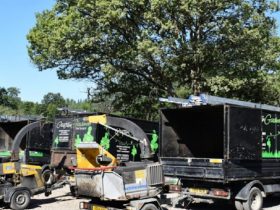 Direct current (DC) motors are rotating devices that convert electrical energy into mechanical energy. The two most common types of DC motor on the market today are brushed and brushless motors, and they perform their roles in significantly different ways. The same applies for related components such as DC gearmotors.
Direct current (DC) motors are rotating devices that convert electrical energy into mechanical energy. The two most common types of DC motor on the market today are brushed and brushless motors, and they perform their roles in significantly different ways. The same applies for related components such as DC gearmotors.
Below we’ve outlined key differences in how brushed and brushless motors are structured, as well as comparing their respective pros and cons. But to understand this distinction, first we need to understand what brushes are.
What are brushes?
Brushes are made from carbon and fitted to the fixed part of a motor to transmit power to the rotating part as efficiently as possible. They work in pairs and are subject to a lot of friction. Brushes come in lots of different shapes and sizes depending on their application and manufacturer, and can be equipped with extras including springs, connectors and brush holders.
What are brushed motors?
Traditional brushed motors feature brushes, a ring of magnets, an armature made up of copper windings, and a commutator. The armature and commutator rotate on the motor shaft, while the brushes and magnets are stationary.
Charge is transferred from a battery, through the brushes and into the commutator, which passes charge to the armature. The armature’s windings are then magnetized, and the armature assembly will begin to spin until the charge stops.
What are brushless motors?
While brushless motors have been used in industrial applications for decades, they’ve only become more widely popular recently thanks to a series of big-name manufacturer releases.
In comparison to brushed motors, brushless motors don’t feature brushes or a commutator, and the locations of the magnets and windings are reversed. A small circuit board instead delivers energy to the windings. This electronic communication allows brushless tools to adapt to tasks intelligently by using more or less power as is needed.
Brushed and brushless motor tools compared
As well as being smarter, brushless motors can also prove more powerful as their configuration allows room for larger windings. Brushless tools also don’t have the same issues with friction that brushes create, making them more efficient and durable too.
These advantages come at a literal cost, however. Brushless motor tools and their batteries are usually significantly more expensive than their brushed counterparts and so may only truly benefit professionals who use and rely on them every day.
Brushless tools are still relatively new to the market however, so these price points are likely to fall as tool and battery design improves and more manufacturers enter the market.
The US power tools market is projected to grow by $1.63bn by 2025 – and brushless motor tools could become a key component as the technology becomes more accessible.

















